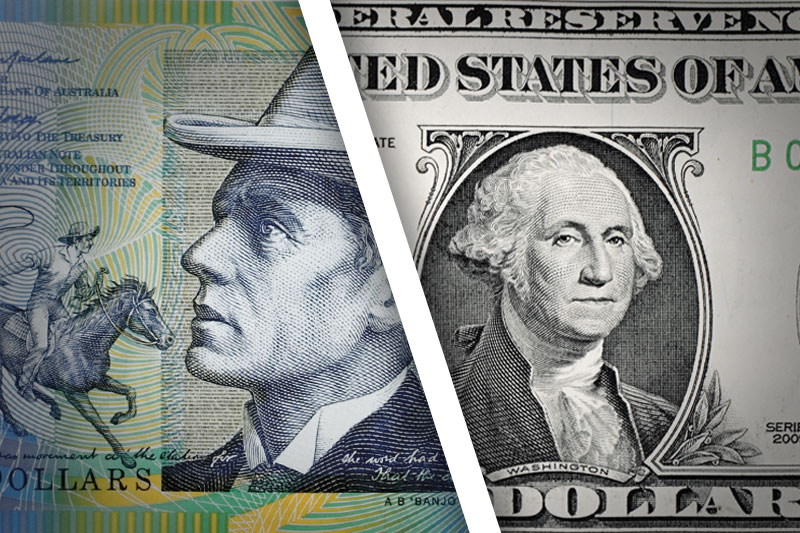Investing.com - The Australian dollar inched lower against the U.S. dollar on Tuesday, as investor sentiment was dented after ratings agency Moody’s downgraded France by one notch.
AUD/USD hit 1.0397 during late Asian trade, the session low; the pair subsequently consolidated at 0.1405, inching down 0.06%.
The pair was likely to find support at 1.0346, Monday’s low and resistance at 1.0457, the high of November 14.
Risk appetite was hit after Moody’s downgraded France by one notch to Aa1 from Aaa with a negative outlook, citing a deteriorating growth outlook for the euro zone’s second-largest economy.
The announcement did not come as a major surprise to markets after Standard & Poor’s cut France’s rating in January.
Later Tuesday, the eurogroup of euro zone finance ministers was to hold talks in Brussels to discuss whether Greece can receive its next installment of bailout funds.
The Aussie remained supported after the Reserve Bank of Australia indicated that it may cut interest rates further next month.
In the minutes of its November 6 policy meeting published earlier, the RBA said “further easing may be appropriate in the period ahead”.
Demand for the Aussie continued to be underpinned after the International Monetary Fund late Monday that it is looking at classifying it and the Canadian dollar in its official currency reserves.
The Aussie was higher against the New Zealand dollar, with AUD/NZD up 0.22% to 1.2722.
Later Tuesday, the U.S. was to publish official data on building permits and housing starts, while Federal Reserve Chairman Ben Bernanke was to speak at an event in New York.
AUD/USD hit 1.0397 during late Asian trade, the session low; the pair subsequently consolidated at 0.1405, inching down 0.06%.
The pair was likely to find support at 1.0346, Monday’s low and resistance at 1.0457, the high of November 14.
Risk appetite was hit after Moody’s downgraded France by one notch to Aa1 from Aaa with a negative outlook, citing a deteriorating growth outlook for the euro zone’s second-largest economy.
The announcement did not come as a major surprise to markets after Standard & Poor’s cut France’s rating in January.
Later Tuesday, the eurogroup of euro zone finance ministers was to hold talks in Brussels to discuss whether Greece can receive its next installment of bailout funds.
The Aussie remained supported after the Reserve Bank of Australia indicated that it may cut interest rates further next month.
In the minutes of its November 6 policy meeting published earlier, the RBA said “further easing may be appropriate in the period ahead”.
Demand for the Aussie continued to be underpinned after the International Monetary Fund late Monday that it is looking at classifying it and the Canadian dollar in its official currency reserves.
The Aussie was higher against the New Zealand dollar, with AUD/NZD up 0.22% to 1.2722.
Later Tuesday, the U.S. was to publish official data on building permits and housing starts, while Federal Reserve Chairman Ben Bernanke was to speak at an event in New York.
